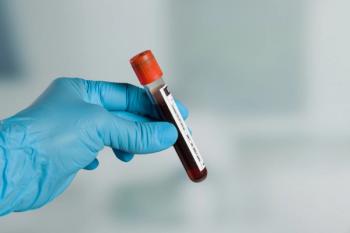
Glargine May Be Effective Addition to Metformin in Maintaining Target Glycated Hemoglobin Levels for Type 2 Diabetes
New research suggests patients with type 2 diabetes who have elevated glycated hemoglobin levels, even when on metformin, could benefit by adding glucose-lowering glargine.
Glargine and liraglutide medication with metformin could lower elevated glycated hemoglobin levels in recent-onset type 2 diabetes patients. However, recently published research showed that after the median 5-year follow-up, the majority of patients did not maintain target hemoglobin levels of 7% or less.
“Among participants with higher baseline glycated hemoglobin levels, there appeared to be an even greater benefit with glargine, liraglutide, and glimepiride than with sitagliptin,” wrote the study authors in a report published in the New England Journal of Medicine.
In the United States, there are nearly 1.5 million new cases of patients with type 2 diabetes each year, with diabetes-specific complications driving the majority of the human and economic costs associated with the disease. Health care professionals use glycated hemoglobin levels to measure chronic glycemia in patients with type 2 diabetes. At less than 7%, these hemoglobin levels can decrease associated morbidities.
For recent-onset type 2 diabetics, metformin is prescribed to lower glucose and hemoglobin levels—but sometimes additional medication is required. Researchers conducted the Glycemia Reduction Approaches in Type 2 Diabetes: A Comparative Effectiveness (GRADE) study to compare the effectiveness of prescriptions from 4 common classes of glucose-lowering medications to supplementarily manage glycated hemoglobin levels along with first-line metformin.
The investigators followed 5047 participants with type 2 diabetes for less than 10 years in the multicenter, parallel-group, comparative-effectiveness clinical GRADE trial. During the trial, patients were administered 2000 mg of metformin daily, along with 1 of 4 glucose-lowering medications from a choice of glargine, liraglutide, glimepiride, or sitagliptin.
The primary metabolic outcome from the trial was a quarterly-measured glycated hemoglobin level at 7% or higher. The secondary metabolic outcome included a greater than 7.5% glycated hemoglobin level.
In reference to the primary outcome, glargine with metformin had an incidence rate of 26.5 per 100 participant-years. The incidence rate of 7% or higher for glycated hemoglobin level was slightly lower at 26.1 for liraglutide. Both medications resulted in lower rates than glimepiride (30.4) and sitagliptin (38.1).
Additionally, patients on glargine and liraglutide, alongside metformin, had average glycated hemoglobin levels below 7% for half a year longer than the other 2 glucose-lowering medications. Glargine particularly showed the most positive benefits, with 61% of participants having glycated hemoglobin levels of 7.5% or less at follow-up.
Further, glycated hemoglobin levels that were above 7.5% trended the same amongst the 4 medications. While most participants did not maintain safe glycated hemoglobin levels at 7% or less, the mean levels after taking one of the dual treatment regimens decreased approximately 0.3% on average. Additionally, subgroups by sex, age, race, and ethnic group did not experience any significant differences in their resulting glycated hemoglobin levels.
The investigators noted that the trial was limited because it excluded SGLT2 inhibitors, which are a class of glucose-lowering medications. Additionally, the chosen medications within each class of glucose-lowering medication were not reflective of all medications available within each class.
“All four medications (glargine, glimepiride, liraglutide, and sitagliptin) improved glycated hemoglobin levels when added to metformin,” study authors wrote in their report. “However, glargine and liraglutide were significantly, albeit modestly, more effective in achieving and maintaining target glycated hemoglobin levels.”
Reference
The GRADE Study Research Group. Glycemia Reduction in Type 2 Diabetes – Glycemic Outcomes. The New England Journal of Medicine. 2022;387:1063-74. doi:10.1056/NEJMoa2200433
Newsletter
Stay informed on drug updates, treatment guidelines, and pharmacy practice trends—subscribe to Pharmacy Times for weekly clinical insights.












































































































































































































